I didn't see a photo of the mud-piddock. The angel wing and false angel wings are beautiful!
Terri K. Hathaway
Marine Education Specialist
North Carolina Sea Grant
http://www.ncseagrant.org/
Over the past weeks I've been collecting angelwing-shaped shells when I find them, including some of the broken shells because to find an angelwing-type shell on the beach, isn't that easy. I have only found one true Angelwing Cyrtopleura costata, and luck would have it that it was chipped and the tip broken off. These are fragile shells, and rare to find them in one piece.
The following angelwing type shells are of the Angelwing Cyrtopleura costata, Atlantic mud-piddock Barnea truncata, false angelwing Petricola pholadiformis, and the Atlantic rupellaria Rupellaria typica species.
Seems I am missing Campeche angelwing Pholas campechiensis and the wedge piddock Martesia cuneiformis in my collection.
| Click for 320px image | |
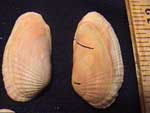 | 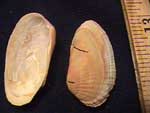 |
| Angelwing type - Atlantic Rupellaria | |
| Click for 320px image | |
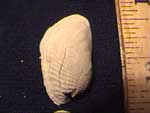 | 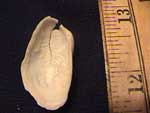 |
| Angelwing type - Atlantic Rupellaria | |
| Click for 320px image | |
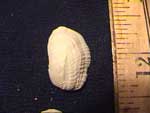 | 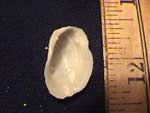 |
| Angelwing type - Atlantic Rupellaria | |
| Click for 320px image | |
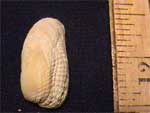 | 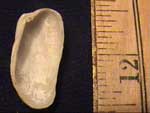 |
| Angelwing type - Atlantic Rupellaria | |
| Click for 320px image | |
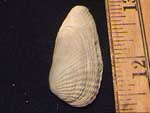 | 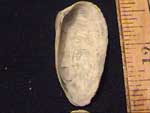 |
| Angelwing type - Atlantic Rupellaria | |
| Click for 320px image | |
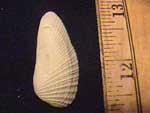 | 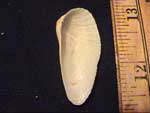 |
| Angelwing type - Atlantic Rupellaria | |
| Click for 320px image | |
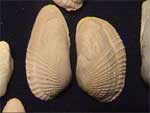 | 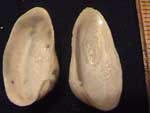 |
| Angelwing type - Atlantic Rupellaria | |
| Click for 320px image | |
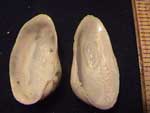 | 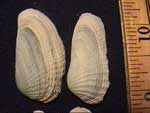 |
| Angelwing type - Atlantic Rupellaria | |
| Click for 320px image | |
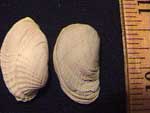 | 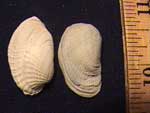 |
| Angelwing type - Atlantic Rupellaria | |
| Click for 320px image | |
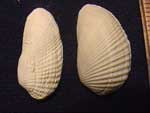 | 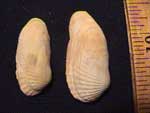 |
| Angelwing type - Atlantic Rupellaria | |
| Click for 320px image | |
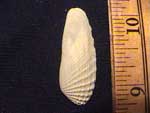 | 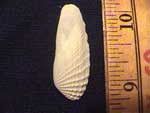 |
| Angelwing type - False Angelwing | |
| Click for 320px image | |
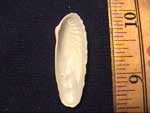 | 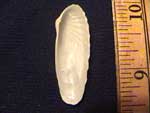 |
| Angelwing type - False Angelwing | |
| Click for 320px image | |
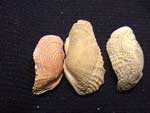 | 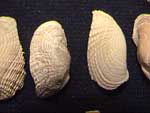 |
| Angelwing type - Fallen Angelwing | |
| Click for 320px image | |
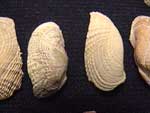 | 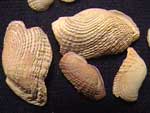 |
| Angelwing type - Fallen Angelwing | |
| Click for 320px image | |
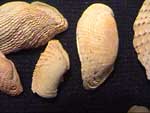 | 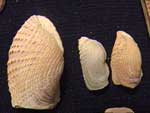 |
| Angelwing type - Fallen Angelwing | |
| Click for 320px image | |
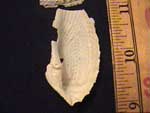 | 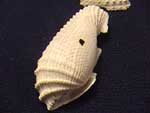 |
| Angelwing type - Angelwing | |
| Click for 320px image | |
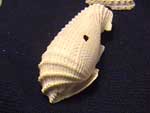 | 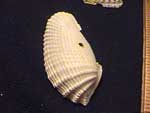 |
| Angelwing type - Angelwing | |
| Click for 320px image | |
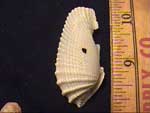 | 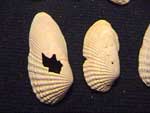 |
| Angelwing type - Angelwing | Atlantic Rupellaria |
| Click for 320px image | |
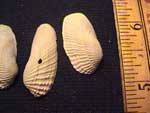 | 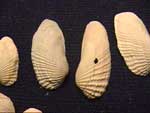 |
| Angelwing type - Atlantic Rupellaria | |
| Click for 320px image | |
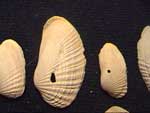 | 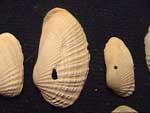 |
| Angelwing type - Atlantic Rupellaria | |
| Click for 320px image | |
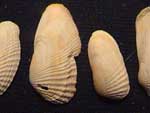 | 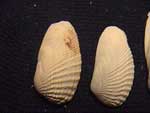 |
| Angelwing type - Atlantic Rupellaria | |
| Click for 320px image | |
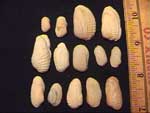 | 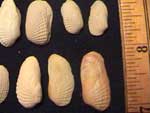 |
| Angelwing type - Atlantic Rupellaria | |
| Click for 320px image | |
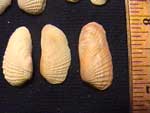 | 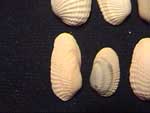 |
| Angelwing type - Atlantic Rupellaria | |
| Click for 320px image | |
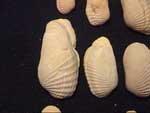 | 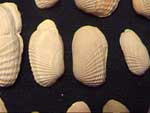 |
| Angelwing type - Atlantic Rupellaria | |
| Click for 320px image | |
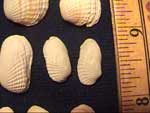 | 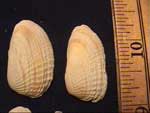 |
| Angelwing type - Atlantic Rupellaria | |
Angelwing (Pholadidae)
Angelwing Cyrtopleura costata (Linnaeus)
Description: (5 3/4 inches) Fairly large, elongate shell tapers to a rounded point. Strongly resembles the wing of an angel. About 30 sharply beaded ribs. Shells rolls outward on top --this edge not braced by partitions. Very thin shell breaks easily.
Color: Pure white exterior and interior, occasionally pink at the edges. Grayish periostracum.
Habitat: Lives offshore and in estuaries, burrowed as much as 3 feet deep in mud or clay. Occasionally washed onto beaches.
Range: New Jersey to Brazil.
Notes: This is a popular shell with delicious meat. The pink tinges occur when the animal feeds on certain types of algae. It moves up and down in its burrows. If dug up, the fragile shell must be placed immediately into a container of water or it will close suddenly and shatter.
Atlantic mud-piddock Barnea truncata (Say)
Description: (2 1/4 inches) Similar to angelwing but with weaker sculpture. One end squared off and other end pointed. Loose accesory plates above the hinge on live specimens.
Color: White exterior and interior.
Habitat: Lives burrowed into mud, clay or softwood. Occasionally washed onto sounds and ocean beaches.
Range: Maine to Brazil.
Notes: Also called a fallen angelwing. This fragile shell is rarely dug from mud without breaking. It burrows deeply and has long, united siphons.
Angelwing Shaped Rupellarias (Petricolidae)
False Angelwing Petricola pholadiformis (Lamarck)
Description: (2 3/4 inches) Thin, elongate shell resembling a small angelwing but lacks the rolled-out hinge area. Beak at one end of shell. Strong radial ribbing on the beak end. Teeth on hinge. Deep pallial sinus.
Color: White exterior and interior.
Habitat: Lives in intertidal zone, burrowed into hard clay or peat. Commonly found on sounds and ocean beaches.
Range: Canada to Uruguay.
Notes: It burrows into hard surfaces and has long, partially united siphons.
Atlantic Rupellaria Rupellaria typica (Jonas)(=Petricola typica)
Description: (1 inch) Variable shape, usually oblong. Coarse radial ribs. Beak about one-quarter of length from front end. Deep pallial sinus. No good lateral teeth.
Color: Grayish white exterior and brownish interior.
Habitat: Lives offshore in rock, shell or coral.
Range: North Carolina to Brazil.
Notes: Shell shape varies because it does not bore its own hole. Instead, it occupies crevices or holes bored by other animals and adopts the shape of the crevice or hole.
Source: Seashells of North Carolina, North Carolina Sea Grant College Program
Related Posts: Fallen Angel Wing and Angel Wing Shell.



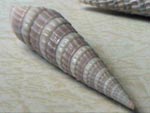

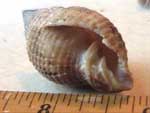





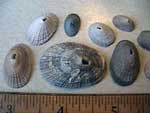

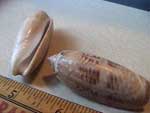
No comments:
Post a Comment